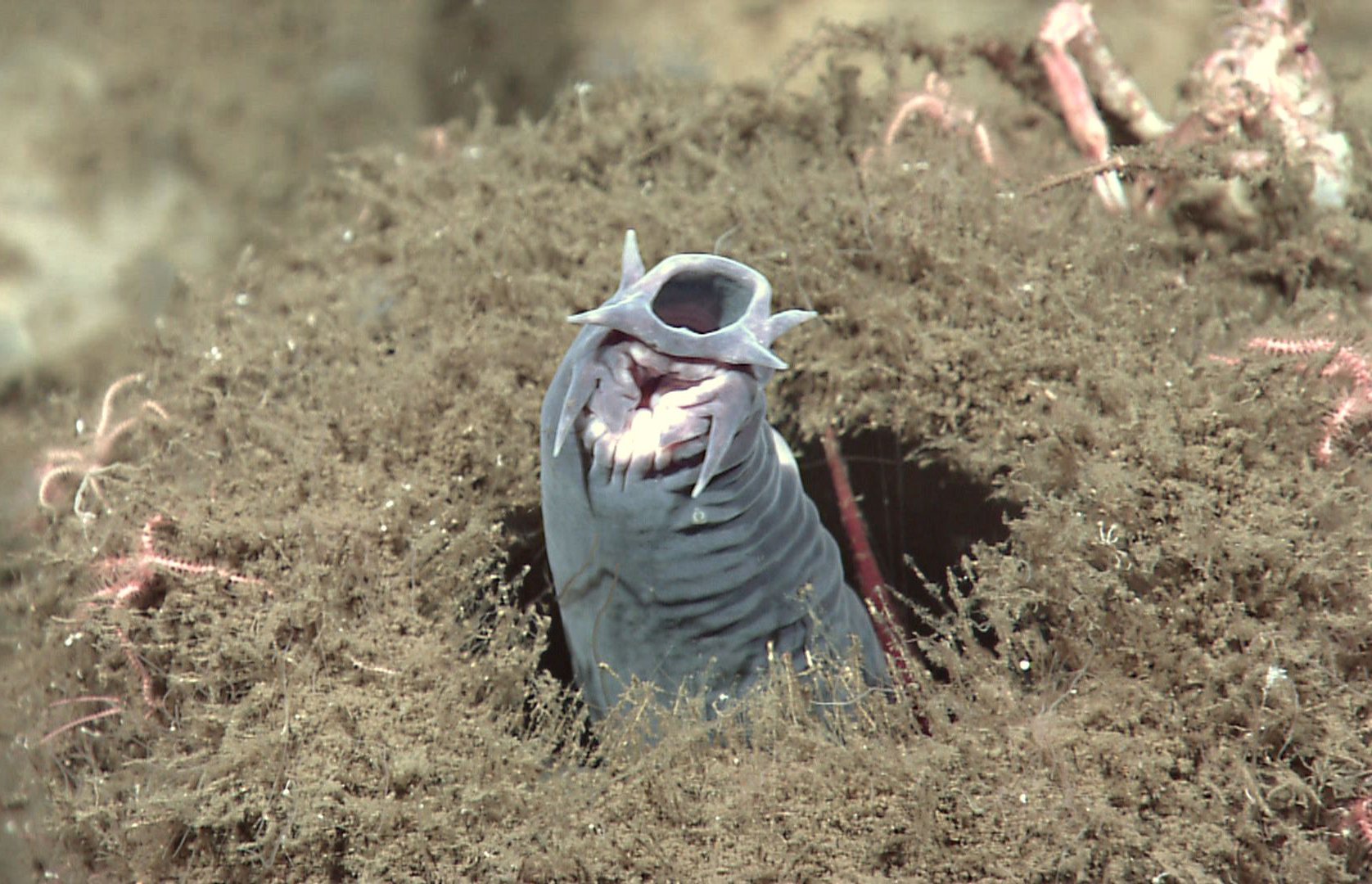
CHORDATA
Craniata
[Public Domain]
Chapter Outline

Links to external sites will appear in pop-up windows.
The subphylum Craniata gets its name from "cranium", meaning skull or well-defined head. Formerly, craniates were split between the vertebrates and one order of eel-like fishes called hagfish. As of 2024, with better genetic evidence, the hagfishes have been absorbed into Vertebrata so now all craniates are vertebrates.
So that messes up the chapter structure a bit. Formerly, this page was supposed to introduce the craniates by focusing on the one order of non-vertebrate craniates, the hagfishes, and the following chapter, named "Vertebrata", would dive into the vertebrates. Now that hagfishes are also vertebrates we'll have to modify things.
The current system splits the vertebrates into two groups based on whether or not the organisms have jaws or not. Cyclostomata contains the jawless vertebrates and Gnathostomata has the jawed vertebrates. It makes sense that this page should focus on the the jawless vertebrates and the following chapters will deal with the jawed vertebrates. Which means the next chapter should probably be changed from "Vertebrata" to "Gnathostomata". But, for now, we'll leave the name as-is. Just know that everything from this page forward, not starting with the next chapter, is a vertebrate.
- Craniata
- Vertebrata
- Cyclostomata - Jawless Vertebrates
- Myxini
- Myxiniformes - Hagfishes
- Hyperoartia
- Petromyzontiformes - Lampreys
- Myxini
- Gnathostomata
- Chondrichthyes (next chapter)
- Teleostomi (chapters 34-38)
- Cyclostomata - Jawless Vertebrates
- Vertebrata
| MYXINIFORMES |
Hagfishes are found in "marine, temperate zones of the world, all oceans except the Red Sea, Arctic, and Southern oceans; only deep water in tropical areas. Jaws absent, no bones. Body naked, eel-like. No paired fins, no dorsal fin. Degenerate eyes. Laterally biting mouth bearing barbels. Teeth only on tongue plus one on 'palate'. Important predators (often scavengers) on invertebrates and others, e.g., netted fishes and discard. One of the most abundant groups of demersal fishes in many areas. Prey item for marine mammals and large predatory invertebrates. Only vertebrates with body fluids iso-osmotic with seawater. About 100 cm max length." - [Fishbase]
As of 2024, 3 species of Myxiniformes have been observed in iNaturalist in the US and 11 throughout the world.
Resources:
|
| PETROMYZONTIFORMES |
This is the order of Lampreys. As of 2024, 17 species of Petromyzontiformes have been observed in iNaturalist in the US and 36 throughout the world.
| Resources: |
| [ Previous Page ] | [ Next Page ] |